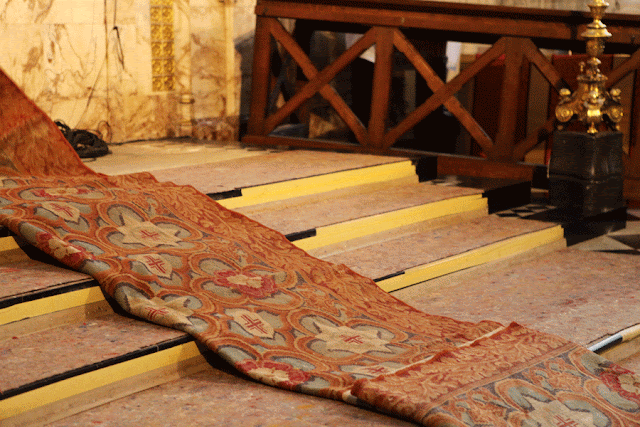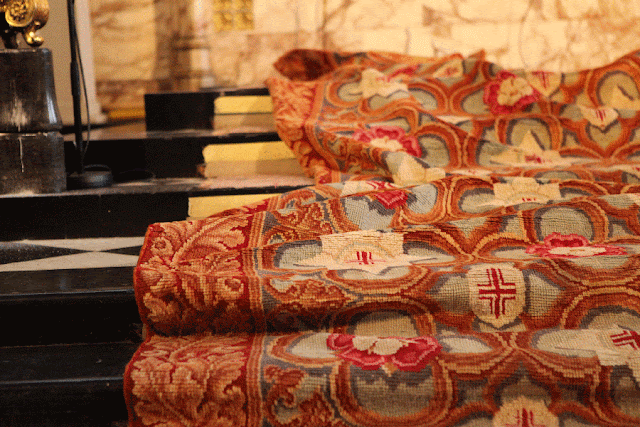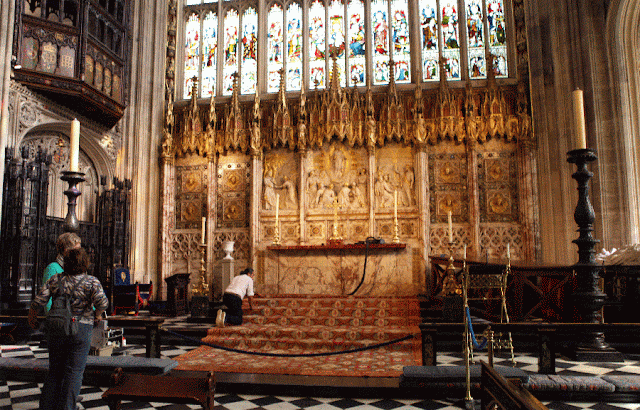We were instructed by Windsor Castle's St. George's Chapel to clean their Altar rug. It is a 705 x 350 cm big, hand knotted in Britain, wool pile on wool foundations rug. Drawing of the rug is dominated by repeated crosses in 14 columns interlocking each other in this 'all over' type of design. It does not feature a focal central point such as a medallion, field drawing is framed with interlocking floral palmettes.
We suggested that we remove the rug from the Altar place and give a full immerse wash to thoroughly clean this wonderful rug. Of course, surface cleaning would be a much easier option but we know how rugs should be cleaned, by full immerse wash only.
Once we have thoroughly inspected the Altar rug, we have noted areas at the ends which have been rather poorly repaired / altered in the past and some areas of wear due to usage.
Our main concern was with the sides and ends which were dressed with cotton material, quite crudely attached with no symmetry and no attention to detail. Apart from the way it was attached to the rug, cotton was also faded in many areas and showing signs of heavy dirt all around. Once we wash the rug, it would look stunning but the cotton material would make this wonderful rug feel awkward as it is impossible to remove heavy dirt from the cotton without damaging the fibres and faded areas could not be restored.
Above all, rugs are not meant to be presented in this manner at all, it is like hanging a Michelangelo painting on the wall with a staple gun rather than displaying in a beautifully hand crafted wooden frame. It is truly that wrong, the rug should be presented as it is meant to be, with woolen side cords to frame the beautiful drawing in the field appropriately.
Apart from the aesthetic concern, it is also fundamentally important to secure the exposed foundation threads, warps and wefts along the edges to make sure the rug is structurally safe to be preserved for many more decades to come. This can only done by precisely hand stitched side cords. Needless to say, rug was structurally very weak due to crudely attached cotton material along the sides and ends.
We could either, which we certainly did not recommend, remove the existing cotton material and attach a new one, at least it would look clean and tidy or create new side cords. New side cords would have correct colour woolen yarn, brown, to visually complete the outer main border too. Hand stitch side cord implication process also secures the rug's foundation threads one by one, which in return will extend the rug's life span dramatically.
Once we informed the Clerk of Works, Mr Poole at the chapel, he responded positively and accepted our proposal to restore this wonderful old rug with woolen side cords as it should be. Once completed and installed, it looked wonderful, with this simple restoration, transformation was dramatic. This is how true artisans can create such dramatic aesthetic improvement with a simple restoration / preservation process. If you have any rugs in similar state, you now know what needs to be done.
www.rugart.biz
WHEN WE RECEIVED IT

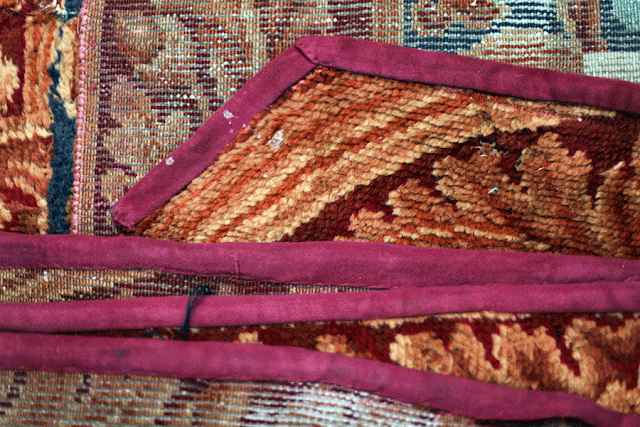


AFTER WASHING, DURING RESTORATION
 |
| After removing the cotton strips |
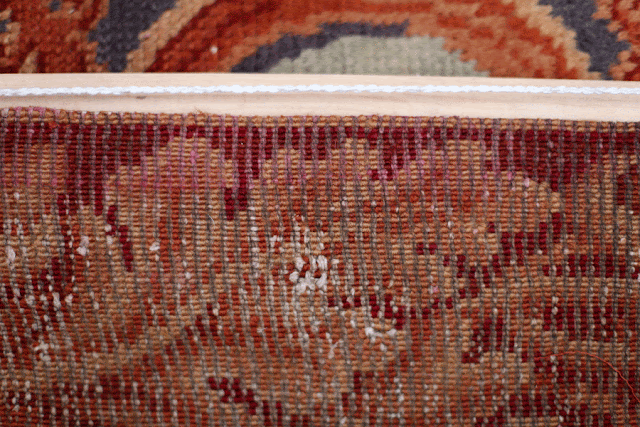 |
| Clean line created, 32 ply cotton thread, chain wrapped to be attached |
 |
| Side cord being attached with needle, securing all the foundation threads one by one during process |
 |
| Side cords attached, all the foundation threads secured, woolen matching colour yarn wrapped around as original |
INSTALLING AT THE ALTAR PLACE
 |
Final touch ups and grooming done by one of our expert restorers, rug is examined carefully for the last time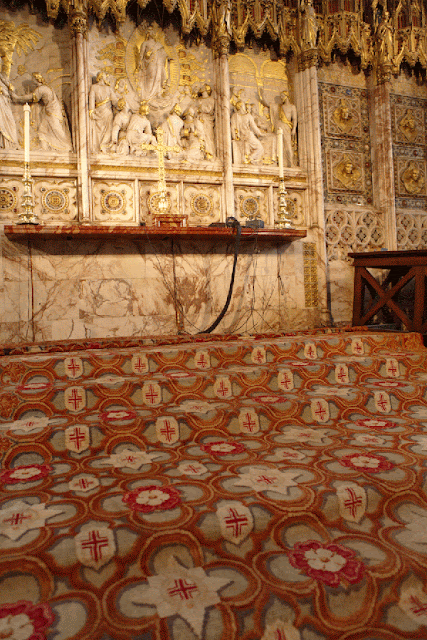 |

 |
| Installed in its place, Altar to be placed on the top |
 |
| View from the Altar place |
ABOUT THE CHAPEL
ABOUT ST. GEORGE'S CHAPEL
History of the chapel, timeline and plenty of wonderful images of the chapel can be seen here:
 |
| Built in 1348, magnificent building, certainly a 'must see' landmark in the country |













